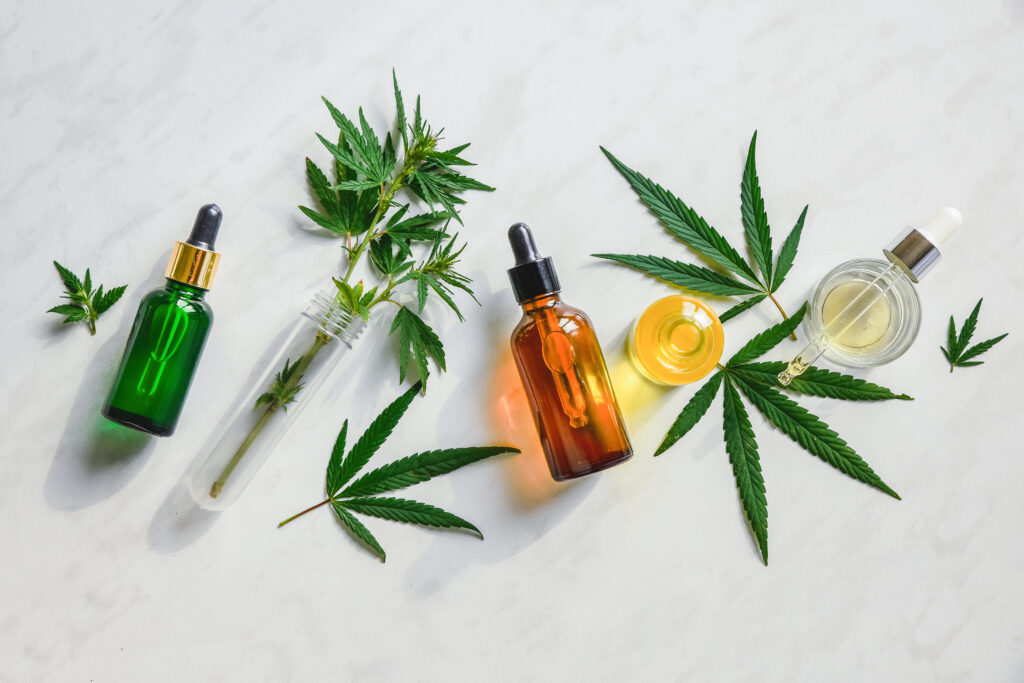The Utilization of CBD Hand Therapy for Pain Treament
Filed under Uncategorized

Patients frequently ask for advice on how to alleviate their pain symptoms. It is common for them to ask about the benefits of CBD Therapy. With the expanding holistic treatment market, Cannabis and CBD is at the forefront of holistic pain treatment. This article aims to give an overview of the utilization of CBD in patients who suffer acute and chronic pain.
“All Cannabis has CBD in it, but CBD is not Cannabis.”
What is CBD?
CBD is Cannabidiol, and it is derived from the hemp plant. It is non-psychoactive and legal to use. CBD is reported to help act as an anti-inflammatory pain killer (CBD pain killer) and has the benefits of reducing anxiety. CBD can be utilized alone or in combination with THC.
What is THC?
THC is Tetrahydrocannabinol. This is often associated with medical marijuana and elicits the psychotropic (“high”) effect. This compound can act as an anti-inflammatory and a sleep aid. THC has been legalized in some states, but there remains some legal grey zone when utilizing CBD with THC. However, changes are underway on the federal and state level to clarify the CBD regulation with THC products.
Does it work?
There is a plethora of anecdotal evidence supporting the use of CBD for pain relief in patients with acute and chronic conditions including arthritis, and other pain-causing ailments. Animal studies have suggested CBD is helpful in providing pain relief and reducing inflammation. There are more extensive studies underway studying the efficacy in humans; however, the evidence remains somewhat inconclusive.
How is CBD taken?
CBD can be taken orally, topically, or inhaled. When taken orally, it can come in capsule or liquid form. It is also sold in cookies or gummies; however, the dosing can be unreliable. There is usually a delay in absorption of one to 2 hours if taken in a capsule form. If taken in a tincture or spray, it can be absorbed within 15 to 45 minutes.
Topically CBD comes in a lotion, oil, or balm and can be applied over painful areas. Topicals can contain a combination of menthol, camphor, and other pain-relieving medication, making it difficult to determine which component is beneficial.
CBD can be inhaled. This is not recommended—vaping has been shown to cause an increased hospitalization rate, and many other adverse health effects have been reported.
How will I know if it is a good product?
CBD products are not well regulated in the United States. There are issues with reporting and controlling the strength of CBD, the presence of undeclared THC. Here is a list of common things to look for to ensure you get a quality CBD product.
- Ask, is it manufactured in the US?
- Purchase from companies that test each batch and one that uses independent labs approved by the American Herbal Pharmacopeia and the US Pharmacopeia
- Avoid companies that overpromise
- People manufacturing and producing CBD products are often not healthcare professionals.
What is the bottom line?
While there is some anecdotal evidence supporting CBD, the benefits remain inconclusive. There remains some risk with integration in CBD in your practice, including the lack of standardization and the possible interaction of other treatments or prescribed medications. It is essential to provide clear guidelines on CBD use and not specify or prescribe any medication. It is also important to not oversell and indicate the product will have specific health benefits as this has not been proven. A good idea is to consult with a certified CBD therapist.
1 Comments
Leave a Comment
More To Read
Arthrodesis vs Arthroplasty in Thumb CMC OA
Piacenza A, Vittonetto D, Rossello MI, Testa M. Arthrodesis Versus Arthroplasty in Thumb Carpometacarpal Osteoarthritis: Impact on Maximal Voluntary Force, Endurance, and Accuracy of Pinch. J Hand Surg Am. 2021 May 24:S0363-5023(21)00199-4. doi: 10.1016/j.jhsa.2021.03.023. Epub ahead of print. PMID: 34045112. The Skinny: This was a retrospective study based on a convenience sample of individuals who…
Read MoreMirror Therapy
Mirror therapy has many implications for therapy and can be used to treat many diagnoses that commonly involve the upper extremity. These include some of the Neuro Conditions we highlighted last week including, Stroke and Focal Hand Dystonia. Btw, you can download a mirror therapy exercises pdf here for free. How long should the patient…
Read MorePediatric Hand Development as it relates to Hand Therapy
Pediatric Hand Therapy and Hand Development by Chelsea Gonzalez It is essential to have an understanding of the major milestones of grasp and upper extremity development when working with younger kiddos so that therapy complements the changes naturally occurring in the brain at each age-level. It is important that babies and toddlers progress through each…
Read MoreSign-up to Get Updates Straight to Your Inbox!
Sign up with us and we will send you regular blog posts on everything hand therapy, notices every time we upload new videos and tutorials, along with handout, protocols, and other useful information.






Great article source to read. Thank you for sharing this.